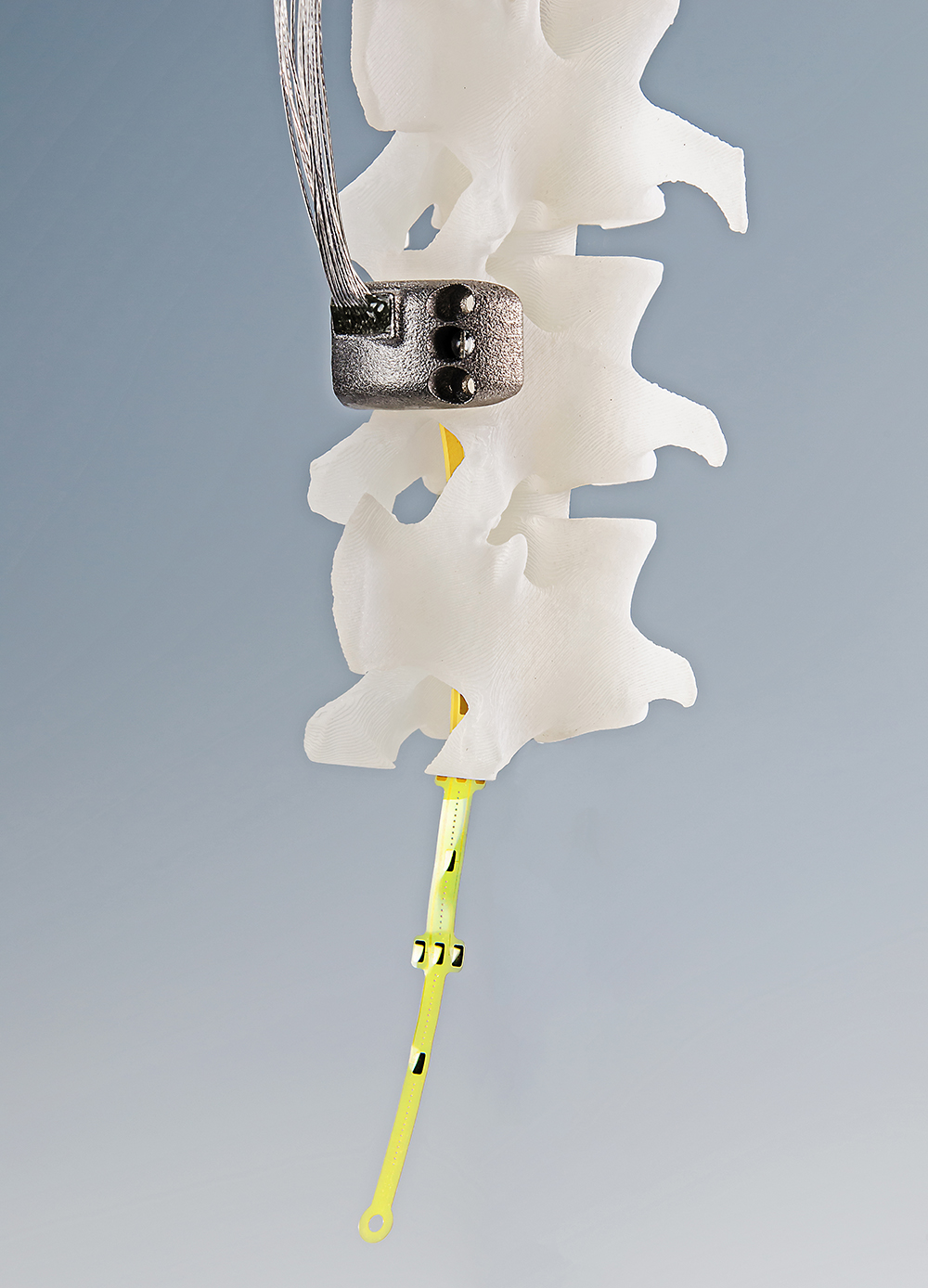Restoring motor functions after severe spinal cord injury

For people left paralyzed after severe spinal cord injury there is currently no prospect of cure, they remain bound to the wheelchair. In the course of the NEUWalk project, which was funded by the European Commission with an amount of roughly 9 million Euros and coordinated by Fraunhofer IMM, a new therapy approach was developed which can prospectively allow restoration of motor functions after severe spinal cord injury.
Methodology
The procedure is based on electrical stimulation of the neural pathways in the spinal cord beneath the impaired section which do no longer receive sufficient control information from the brain. In order to develop and experimentally validate the procedure in animal models IMM has realized specific multi-channel micro electrode arrays that are epidurally implanted in the lumbar region on the spinal cord. Positioning of the micro electrodes is done close to the roots of the nerve cords which are responsible for activation of those muscles involved in locomotion. Walking motor functions can be triggered by feeding in pulse patterns in a certain time and spatial sequence and thereby be modeled in their flow.
Prospects of the therapy approach
Investigations with rats having a serious damage of the spinal cord which does, however, not result in a complete paralysis, have shown that the stimulation method, in combination with a special robot-supported rehabilitation training, can lead to activation of still available, undamaged pathways to transmit stimuli coming from the brain beyond the injury. The animals regained not only the capability of performing voluntary walking, they even could climb steps and overcome obstacles. With respect to paraplegic people the goal is to allow them forthcoming more autonomy and freedom in their everyday life. At the end of the project a first pilot patient has been implanted successfully. Only after a few weeks of kinesitherapy with a training robot under electrical stimulation of the spinal cord it could be shown that standing and walking exercises of the patient could be performed with significantly less body weight support. Despite all successes achieved so far it can be assumed that it will still take years until a dedicated neuroprosthetic system is mature enough for clinical use and the effectiveness of electrical spinal cord stimulation has been verified on a larger cohort of patients.
Our research & development services
During the past years IMM has continuously improved it’s expertize in design and fabrication of rigid as well as of flexible multi-channel micro electrode probes for neural signal recording and stimulation. The devices are successfully used in pre-clinical validation of new diagnostic and therapeutic approaches in neurosurgery and neuroprosthetics. With the help of our dedicated fabrication processes we can provide tailored micro electrode devices that meet the custom-defined electrical, mechanical and anatomic requirements.
related data sheet: Multisite Microelectrodes For Neuroengineering Applications
Funded by: 7th Framework Programme of the European Commission, project reference 258654.
 Fraunhofer Institute for Microengineering and Microsystems IMM
Fraunhofer Institute for Microengineering and Microsystems IMM